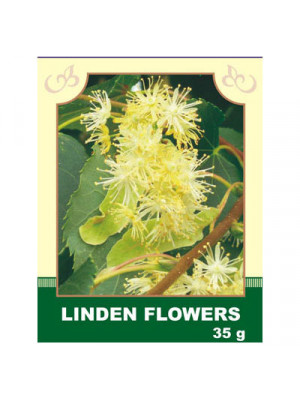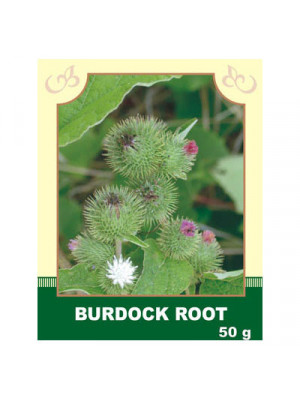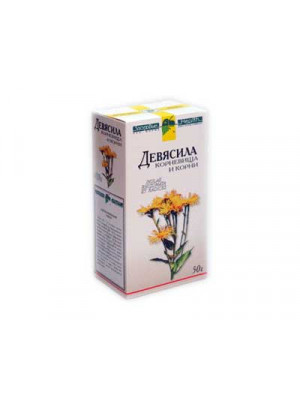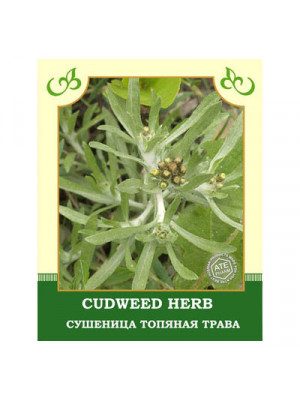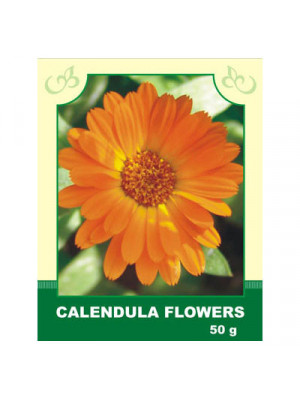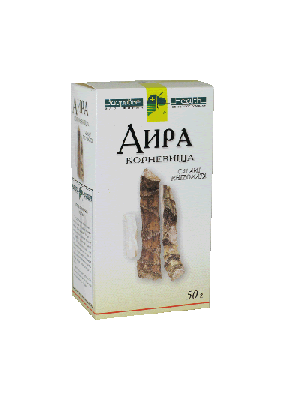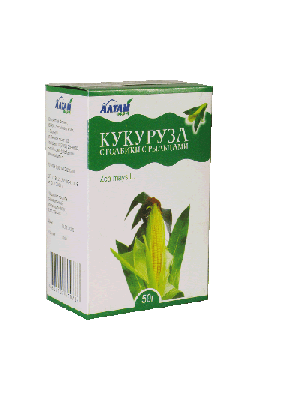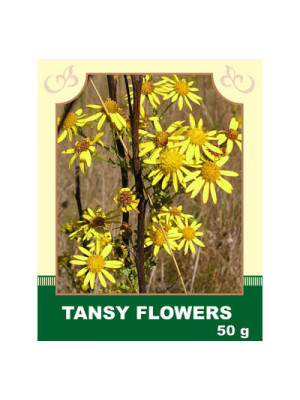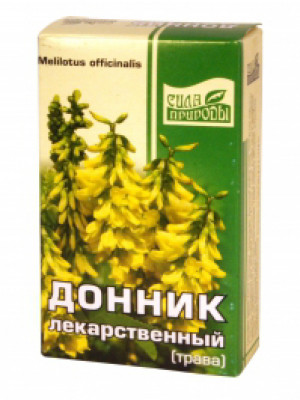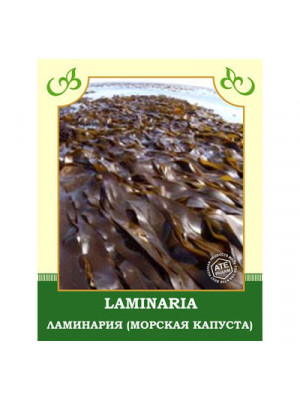Herbs
Internally, linden flower infusion is taken for the following conditions:
- Colds, rheumatism, and cough;
- Inflammation of the kidneys and bladder;
- Nervous system disorders in children and the elderly, including hysteria, epilepsy, and headaches;
- Intestinal colic and stomach pains;
- During measles and mumps.
Methods of administration and dosages: 2 tablespoons of crushed linden flowers are infused in 200 ml of hot boiled water, steeped for 20 minutes. Taken internally in a warm form, 1-2 cups 2-3 times a day after meals.
Externally, the infusion is used for:
- Gargling in cases of inflammation of the mucous membranes of the mouth and respiratory tract;
- As compresses and lotions for edema, ulcers, inflammation of hemorrhoidal nodes, and joint pain in rheumatism and gout;
- As therapeutic baths: 100 g of raw materials are poured into 2 liters of boiling water, boiled for 5 minutes, and infused until cooled.
Contraindications: Individual intolerance.
$7.99
Description. Burdock Root is one of the foremost cleansing herbs, providing nourishing support for the blood, the liver, and the natural defense system. It's rich in Vitamins B1, B6, B12, and E, plus manganese, copper, iron, zinc, sulfur, and more. You'll find Burdock Root in many tonic formulas and special blends designed for internal cleansing. In traditional herbal texts, Burdock Root is described as a blood purifier or alterative, and was believed to clear the bloodstream of toxins. The herb contains polyacetylenes that have both anti-bacterial & anti-fungal properties. Burdock Root contains high amounts of inulin and mucilage. This may explain its soothing effects on the gastrointestinal tract. Bitter constituents in the root may also explain the traditional use of Burdock to improve digestion. Use. Medicinally, Burdock Root has been used both internally and externally for eczema and psoriasis, as well as to treat painful joints and as a diuretic. In traditional Chinese medicine, Burdock Root, in combination with other herbs, is used to treat sore throats, tonsillitis, colds, and even measles. It is eaten as a vegetable in Japan and elsewhere. Burdock is a mild laxative. It also aids in the elimination of uric acid. By improving the function of many organs of elimination (liver, kidneys, bowels), many health conditions are improved. Burdock Root also has the ability to mildly lower blood sugar.
Attention! Before using any herbal products, make sure that you have full knowledge of how the herb works and any adverse reaction it may cause.$6.99- The root is the part of the plant used for healing purposes. In ancient Rome, elecampane was regarded as a good aid in overcoming post banquet indigestion. This plant is also highly appreciated in Tibetan medicine. Elecampane is considered to have antiphlogistic, expectorant, improving digestion, diuretic and tonic properties. Its restorative, tonic action complements its ability to counter infection. Elecampane entered folk medicine with the ancient Greeks and Romans, who used it in cold remedies because it was thought to promote sweating and help bring up phlegm. In the 19th century the roots were boiled in sugar water to make cough drops and asthma lozenges or just candy.$6.99
Internally: Taken for stage II hypertension, angina, atherosclerosis; added to herbal blends for peptic ulcer of the stomach and duodenum, gastritis with increased and decreased acidity, ulcerative colitis, as well as in diabetes and tuberculosis.
Method of application and doses: 2 tablespoons of raw material are poured with 200 ml of boiling water, boiled in a water bath for 15 minutes, infused at room temperature for 45 minutes, strained, squeezing out the remaining raw material. The resulting infusion is brought to the original volume with boiled water and taken in 1/2-1/3 glass 2-3 times a day after meals.
Externally: Applied for the treatment of cancerous diseases, wounds, burns, fistulas, and long non-healing ulcers. Prescribe compresses, lotions, tampons from infusions of Potentilla; for foot baths: 50 g of raw material is poured with 1 liter of boiling water, boiled for 5 minutes, infused until cool, strained, diluted in 10 liters of boiled water to a temperature of 35-37 degrees Celsius. The duration of the foot bath is 30 minutes.
Contraindications: Arterial hypotension, thrombophlebitis, individual intolerance.
$6.99Internally, it is taken for gastritis, enterocolitis, stomach and duodenal ulcers; for inflammatory diseases of the liver and kidneys; in the treatment of heart diseases accompanied by palpitations, edema, and shortness of breath.
Method of application and dosage: 2 tablespoons of raw material are poured with 400 ml of boiling water, infused for 2 hours, strained, squeezing the plant material. The resulting infusion is brought to the original volume with boiled water. Take 1/2 cup 3 times a day.
Externally, in the form of rinses, douching, enemas, and compresses, it is used for diseases of the mucous membrane of the mouth and throat, gingivitis, thrush in children; for conjunctivitis; for abundant whites in women; for the treatment of wounds, burns, and ulcers on the body, in oncology. 20-40 g of raw material is poured with 200 ml of boiling water, heated in a boiling water bath for 15 minutes, infused at room temperature for 45 minutes.
Contraindications: individual intolerance, with low blood pressure.
$5.20- Calamus comes from China and India. In his books Hippocrates wrote about extraordinary properties of this plant. Nowadays Calamus root is widely used throughout the world. The plant consists of ascorbic acid, starch, gum, volatile oil, tannins etc. Calamus Root is an aromatic stimulant that has been used for centuries in many cultures mainly for digestive complaints. It is considered to benefit digestion, increase the appetite and ease dyspepsia and stomach cramps. The herb is thought to relieve the discomfort of flatulence, as well as check the growth of the bacteria which gives rise to it. The root is considered a stimulant, carminative, hypotensive, tonic, bitter, and aromatic.$7.99
- Description. Corn silks contain vitamin K, ascorbic acid and pantothenic acid, fatty and volatile oils and other substances. The entire corn plant has long been used in Chinese and American Indian cultures for medicinal and nutritional purposes. Research has shown that corn silk may cause the production of bile and improve liver function. Chinese research has shown that corn silk can also lower blood pressure and improve blood-clotting. Because corn silk has such a high concentration of potassium (Vitamin K), it is a powerful diuretic. It can be used for many problems with the urinary tract. It is helpful for kidney stones, cystitis, and problems with urine flow.
Use. Corn silk is used for many types of urinary tract problems. The plant can be used to sooth the lining of the urinary tract. It can help relieve pain and difficulty with urination. Corn silk can help relieve the problem of cystitis. Corn silk is believed to reduce the formation of kidney stones. It can also help relieve symptoms for person who already has stones. In China, corn silk is often used to treat fluid retention and even jaundice. Use in cases of inflammation of the gallbladder, bile duct, and hepatitis with retention of bile secretion.
Attention! Before using any herbal products, make sure that you have full knowledge of how the herb works and any adverse reaction it may cause.$6.99 Internally, it is taken as an antipyretic and sedative for cramps in rheumatism and polyarthritis, headaches, hypochondria, epilepsy; as an antiparasitic remedy for expelling roundworms and pinworms; as a cholagogue for liver and gallbladder diseases, as well as for kidney and bladder inflammations, menstrual cycle disorders, and nervous excitement.
Method of application and dosage: Decoction - 2 tablespoons of finely chopped raw material, pour 0.5 liters of boiling water, simmer on low heat for 10 minutes, let it infuse for half an hour to an hour, and drink 1/4-1/3 cup three times a day 20-30 minutes before meals.
The infusion of tansy is prepared in the same proportion. It is usually taken in 1/4-1/3 cup three times a day. In case of peptic ulcer disease, the dose of infusion and decoction can be increased to 1/2 cup per intake.
Externally, it is used for treating purulent wounds, ulcers, bruises, rheumatism, scabies, and for washing the head in case of pediculosis (lice infestation). Steep 1 tablespoon of flower heads in 400 ml of boiling water for 2 hours.
Contraindications: Individual intolerance, not recommended during pregnancy and for children of a younger age. The plant is potent, strict dosage is required.
$5.50Internally, it is used in the treatment of chronic bronchitis, hypertension, nervous disorders, epilepsy, insomnia, migraines, rheumatism, and radiation sickness. It is particularly noted for its application during menopause, kidney and liver diseases, ovarian diseases, and respiratory infections.
Method of application and dosage: Pour 1 tablespoon of ground herb of clover with 200 ml of boiling water, heat on a water bath for 30 minutes, cool at room temperature for 15 minutes, strain. Drink 1/3 cup 3 times a day before meals. Externally, infusion and decoction of clover, as well as ointment from clover flowers, are used for the treatment of furunculosis, purulent wounds, mastitis, otitis, and rheumatism.
Contraindications: individual intolerance, pregnancy, kidney diseases. It is a toxic plant, and strict dosage should be observed; consult a specialist before use. It is advisable to use it only in herbal blends.
$6.99Internally, bladderwrack is taken for the treatment and prevention of atherosclerosis and mild thyroid diseases. It is also used for constipation, acute and chronic enterocolitis, proctitis, and hemorrhoids. Bladderwrack can completely eliminate sexual dysfunctions such as female inflammation and impotence in men.
Method of consumption and dosage: Take 1 teaspoon of powder 2-3 times a day, washing it down with water.
Contraindications: individual intolerance, nephritis, tendency to bleeding, tuberculosis of the lungs, urticaria, during pregnancy, and in other cases when iodine consumption is not recommended.
$6.99


